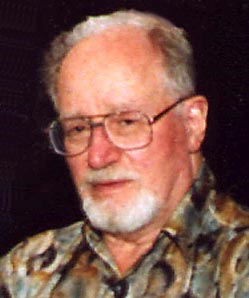Chapter 1.
— Day One —
Today, like every day, the phone rings: I answer it, but for once I’m genuinely surprised by what I hear.
What usually happens here at the Epistemological Detective Agency is that a client calls: he or she has ended up in some kind of nebulous everyone-loses train wreck scenario, surrounded by people spinning ridiculous stories to save their sorry skins. But if that’s you and you’re rich and really want to get to the truth (or, at least, to disprove the manifestly false)… well, you call us. In a world of wonky knowledge pipes, we’re the 24-hour emergency plumbers. Not so much lawyers, but rather something closer to ‘industrial logicians’.
But this afternoon’s call is playing out to quite a different script. On the other end of the line is a well-known billionaire Yale benefactor – let’s call him “Charlie” – who wants to hire our specialist services, but not necessarily in a way we’re going to be comfortable with.
“So…”, I say, trying to recap where we’ve got to, “do I take it that you want us to prove what kind of thing this manuscript actually is?”
“No, that’s not it at all.” He pauses: but even over the phone, I can hear him still trembling with anger and annoyance. “I want to hire you Epistemological detective people for some proper Popperian disproof. These crazy-ass Voynich theories are making my alma mater a laughing stock, and I want you to stop them in their ridiculous tracks.”
He’s definitely got a point: for months now the Voynich Manuscript has been all over the media and Internet, with one broken theory after another loudly trumpeting itself as supposedly irrefutable fact. They can’t all be right at the same time: but they definitely might all be wrong.
“I can see what you’re trying to do”, I muse, “but history is something of a… high-risk area for us.” And the less said about that whole sorry Vinland Map episode the better, we both think to ourselves.
“Look, sixteen thousand bucks a week says your agency will take it on. My PA says that’s double your normal rate, but I don’t care, I know you can do this thing and I want you guys on board ASAP, even if History does make your toes curl.”
After a lifetime as a captain of industry, Charlie is plainly used to getting what he wants. Right now, I haven’t really got any objections that $16K a week can’t comfortably fix. And he knows it.
“I’ll take it from your silence that you’re on board”, he beams, yet another deal won by sheer force.
“Yes, we will take it on”, I reply, “though I’m sure you already know it normally takes us about a fortnight to assemble a dossier of rock-solid premises to build out from.”
“In this instance, I have a short cut for you”, he smirks. “I’ve taken the liberty of putting Encyclopedia Girl on a plane, she’ll be at your door first thing tomorrow morning.”
“Encyclo-who?”, I hear my voice say, though a touch more incredulously than I actually intended.
“Her name’s Germaine Zayfert; she’s from Long Island, and has spent the last two months filling her capacious photographic memory with everything to do with the Voynich Manuscript. She’s on my payroll until the summer, as a kind of intern: just keep feeding her bagels and coffee and she’ll tell you everything you want to know. I’ll wire a fortnight’s money in a minute. Goodbye!”
And with that the line goes dead. Whatever made Charlie his billions, I think to myself, it certainly wasn’t his phone manner. I call Parker and Joey to let them know to clear their diaries and to be in at 9am: we’re going to be busy for a good while.
— Day Two —
When I arrive to open up our Little Italy office at 8.30am, there’s a purple-haired girl already sat on the stone steps outside. Her eyes seem distant, yet raster back and forth as if she’s counting far-off cars only she can see: she looks about fifteen, but I know she’s older.
She springs to her feet and juts out a small white hand for me to shake. “You must be Maxten Harmer?” she asks with that superfluously upwardly-inflected final syllable that everyone under twenty-five seems to, like, like so much?
“Yes, I must”, I reply, shaking her hand lightly. “But call me Max. How should I introduce you to the others?”
At that, she recoils backwards, physically withdrawing into her coat. “I… don’t see anybody else here,” she mumbles into the fabric. “Who the heck are you talking about?”
“Joseph Serrani and Parker Hitt II, the Epistemological Detective Agency’s other two principals: they’ll be here in half an hour. I expect Charlie already told you about them.”
“Oh. Yes. That’s right.” I watch in curious fascination as her body language slowly winds from scared witless back down to merely tense as hell. “Sorry about that. I have a tendency to be quite… literal, sometimes. Call me ‘Mayne’. Can’t stand that whole ‘Encyclopedia Girl’ thing.”
“Yeah, that would bug me too,” I commiserate, opening the door and disabling the alarm. “‘Mayne’ is good. Coffee?”
“Perfecto”, she answers with what can only reasonably be described a homeopathic flicker of a half-smile. “I’ll fetch my bags.” And she turns, marches down the steps and then away down the street, without once looking back.
I can’t honestly see how this is going to work.

